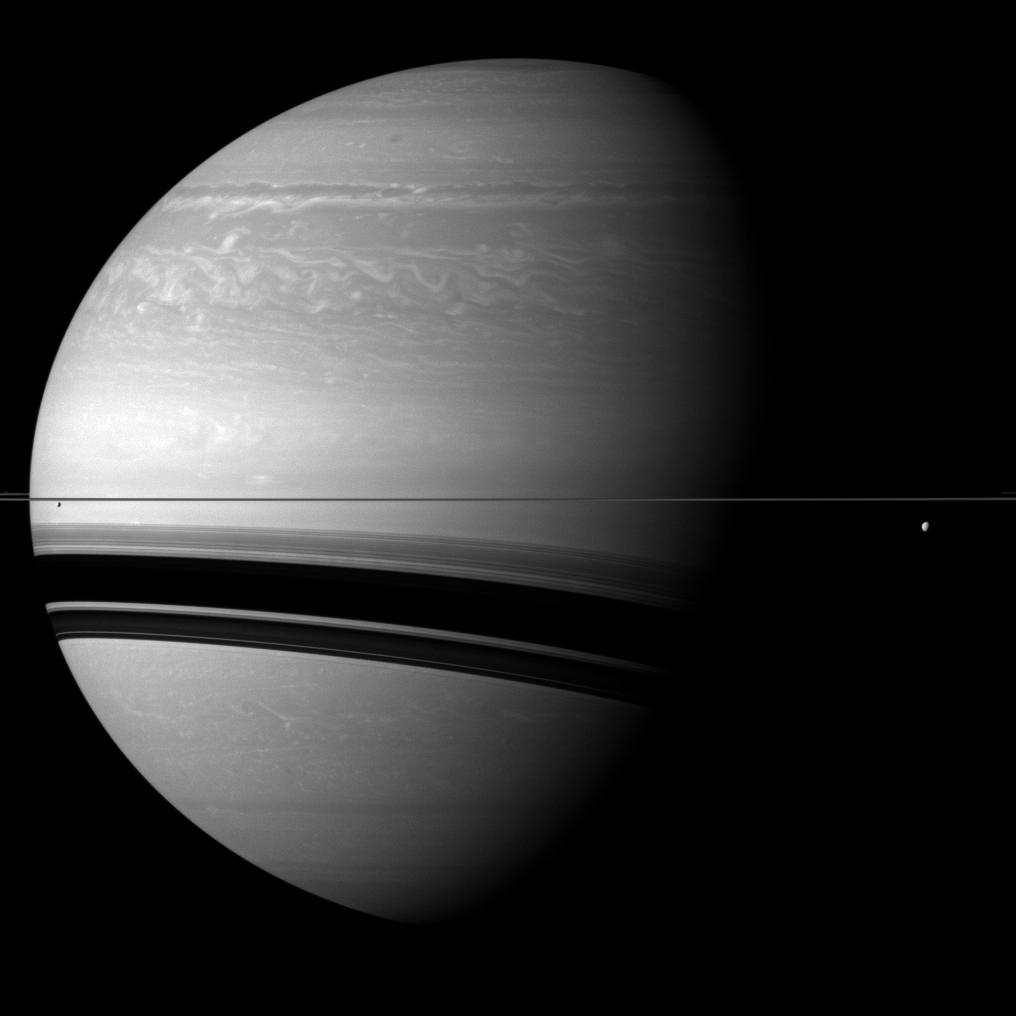Enormous Saturn

| PIA Number | PIA14614 |
|---|---|
| Language |
|
Compared to the gas giant, the two moons shown on either side of Saturn seem particularly small in this Cassini spacecraft view.
Tethys (660 miles, or 1,062 kilometers across) is on the right of the image, below the rings. Smaller Enceladus (313 miles, or 504 kilometers across) is on the left of the view, below the rings. Pandora (50 miles, or 81 kilometers across) is also present in this view but is barely visible. It appears as a small grey speck above the rings on the extreme left edge of the image. Pandora has been slightly brightened by a factor 1.2 relative to the rest of the image.
This view looks toward the northern, sunlit side of the rings from just above the ringplane.
The image was taken with the Cassini spacecraft wide-angle camera on Dec. 7, 2011 using a spectral filter sensitive to wavelengths of near-infrared light centered at 752 nanometers. The view was obtained at a distance of approximately 1.3 million miles (2.1 million kilometers) from Saturn. Image scale is about 77 miles (124 kilometers) per pixel.
The Cassini-Huygens mission is a cooperative project of NASA, the European Space Agency and the Italian Space Agency. The Jet Propulsion Laboratory, a division of the California Institute of Technology in Pasadena, manages the mission for NASA's Science Mission Directorate in Washington. The Cassini orbiter and its two onboard cameras were designed, developed and assembled at JPL. The imaging team is based at the Space Science Institute, Boulder, Colo.
For more information about the Cassini-Huygens mission visit http://saturn.jpl.nasa.gov or http://www.nasa.gov/cassini . The Cassini imaging team homepage is at http://ciclops.org .
Credit: NASA/JPL-Caltech/Space Science Institute
